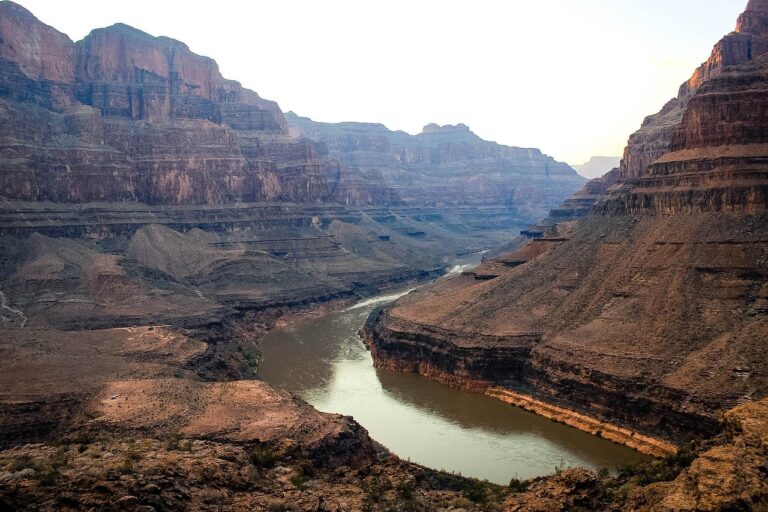The National Park Service (NPS) has announced a proposal to significantly increase fees for non-commercial river trips in Grand Canyon National Park, marking the first adjustment in over 26 years. The proposal, set to take effect on March 1, 2025, is currently open for public comment until February 15, 2025. If approved, the new rates will more than triple the cost for certain river trips, sparking discussion among recreational users and conservation groups.
For decades, private river permits have remained unchanged, even as inflation and operational costs have risen. Under the new proposal, the cost for a trip from Lees Ferry to Diamond Creek would increase from $90 to $310 per person, while the Diamond Creek to Pearce Ferry route, which was previously free, would now carry a $55 per-person fee. The $25 lottery application fee for trip permits, however, would remain the same.
The Justification for Higher Costs
The National Park Service has framed the proposed increase as a necessary measure to keep up with the costs of managing the Colorado River corridor. Officials point out that the last fee adjustment was in November 1998, and during that time, the cost of maintaining and protecting the river area has significantly risen. The price of fuel, labor, and emergency response services has increased drastically, requiring a restructuring of the financial model that supports non-commercial river use.
A comparison of cost increases since 1998 highlights the financial challenges faced by the park:
| Expense | 1998 Cost | 2024 Cost | Increase |
|---|---|---|---|
| Gallon of Gas | $1.09 | $3.25 | 2.98x |
| Hotel Room | $100 | $192 | 1.92x |
| Fast Food Burger | $0.74 | $2.64 | 3.56x |
| Private River Permit | $90 | $305 | 3.38x |
Beyond inflation, the NPS cites increased demands on infrastructure and environmental management. According to agency reports, costs associated with river safety, restoration, and monitoring have all grown. Emergency search and rescue operations, river patrols, and campsite maintenance are now more resource-intensive than ever. In 2024 alone, Grand Canyon’s Search and Rescue (SAR) Team responded to 345 incidents, with river users accounting for more than half of these emergencies.
How the Increased Fees Will Be Used
Funds generated by the new fee structure will be used to offset operational expenses that have previously been supplemented by congressional appropriations. The proposed fee structure is designed to ensure that those who benefit most from river recreation contribute equitably to its upkeep. According to the National Park Service, approximately 95% of collected fees will go directly back into the river corridor, covering the following expenditures:
- 58% allocated to river corridor care, including environmental restoration, mitigation, and monitoring.
- 25% dedicated to emergency response and river patrols.
- 12% used for Lees Ferry check-in services and safety briefings.
- 5% for administrative oversight, budgeting, and IT support.
NPS officials emphasize that without this fee adjustment, long-term sustainability for non-commercial river operations may be at risk. The proposed increase ensures that essential safety measures and conservation efforts can continue without placing an undue burden on general taxpayer funds.
Mixed Reactions from River Users and Conservation Groups
The response to the proposed fee increase has been mixed, with some river enthusiasts and conservationists expressing support, while others raise concerns about affordability and fairness. Supporters argue that maintaining the river’s delicate ecosystem requires significant investment and that higher fees will lead to improved infrastructure and safety measures. They point out that non-commercial river users have benefited from decades of below-market rates and that an increase is long overdue to align with actual operational costs.
Opponents, however, argue that such a steep increase may create financial barriers for small groups and independent boaters, making river trips less accessible to the average adventurer. Some question whether commercial operators, who account for approximately 51% of river use, should bear a larger share of the financial burden. There are also concerns that the increase could lead to a decline in non-commercial river applications, potentially reducing public access to a national treasure.
Public Comment Period and Next Steps
The National Park Service is actively seeking public input on the proposed changes before finalizing its decision. Interested parties can submit feedback online at the NPS planning website or via mail to the Grand Canyon National Park Administrative River Operations Program. The deadline for comments was February 15, 2025.
If the proposal moves forward as planned, the new fee structure will be implemented beginning in March 2025. Whether the increase ultimately enhances river operations or deters independent river travel remains to be seen, but it is clear that this policy shift marks a significant moment in the management of one of the nation’s most iconic waterways.
Current prices for noncommercial river permits can be found here.
